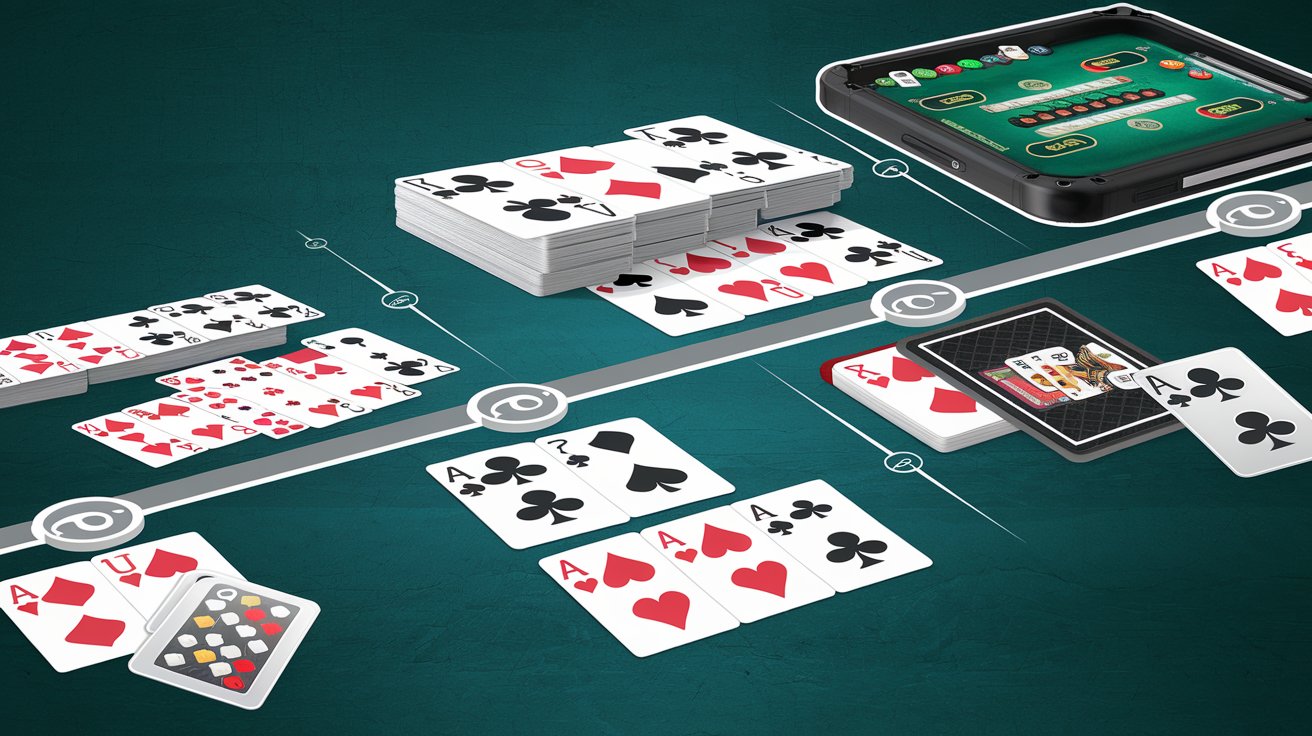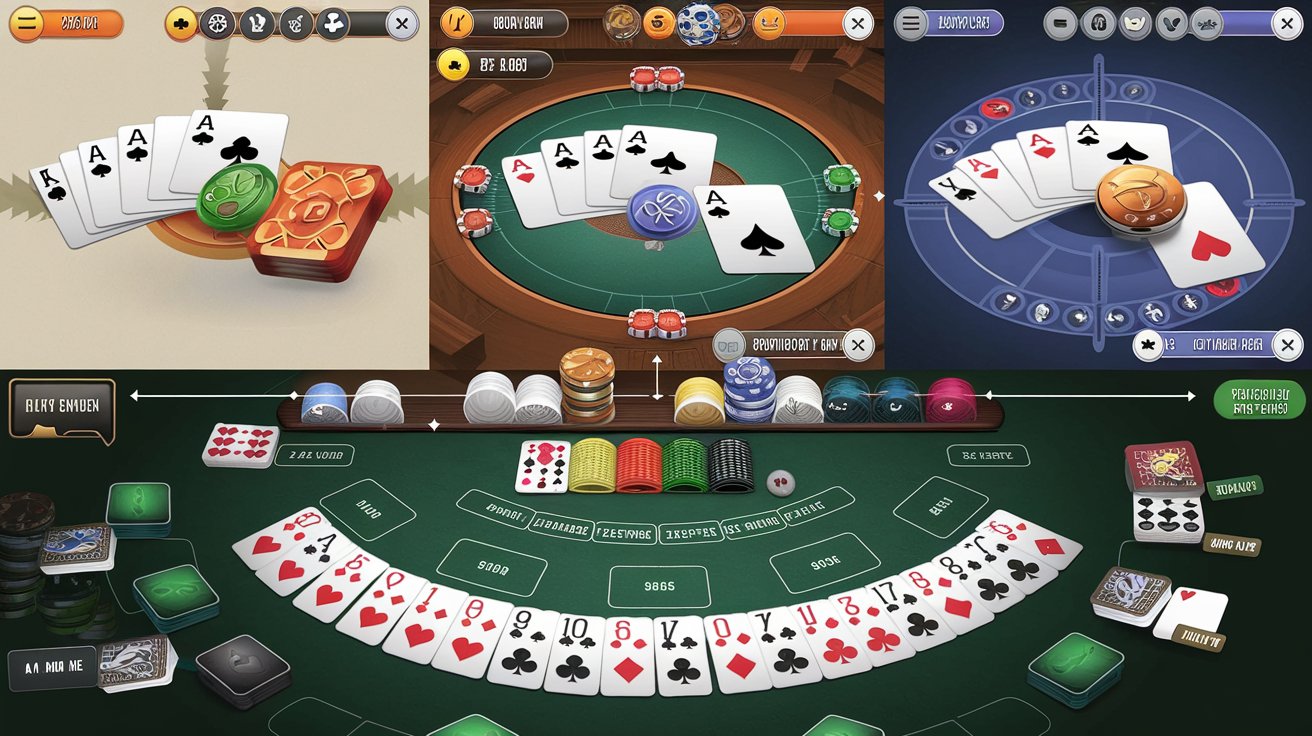The world of online gaming has undergone a dramatic transformation over the past two decades, and few games exemplify this evolution as vividly as online rummy. What began as a simple digital adaptation of a classic card game has morphed into an immersive, visually stunning experience that captivates millions of players worldwide. From pixelated cards and basic interfaces to sleek designs, vibrant animations, and cutting-edge technology, the graphics and design of online rummy have come a long way. In this blog, we’ll dive deep into the fascinating journey of online rummy’s visual evolution, exploring how advancements in technology, user expectations, and creative innovation have shaped its modern-day appeal.
The Early Days: Simplicity Meets Functionality (1990s–Early 2000s)
The origins of online rummy can be traced back to the late 1990s and early 2000s, a time when the internet was still in its infancy. During this period, online gaming was less about aesthetics and more about functionality. Developers focused on bringing the traditional card game to the digital realm, prioritizing gameplay over visual appeal.
Graphics in these early online rummy platforms were rudimentary at best. Think 2D pixelated card designs, static backgrounds, and minimalistic user interfaces (UIs). Cards were often blocky, with basic colors—red for hearts and diamonds, black for spades and clubs—and little attention to detail. The goal was simple: replicate the physical rummy experience in a way that was accessible on dial-up connections and low-resolution screens.
Despite the lack of visual flair, these early versions laid the groundwork for what was to come. Players didn’t mind the simplicity because the novelty of playing rummy online was enough to keep them hooked. However, as internet speeds improved and computers became more powerful, the demand for better graphics and smoother designs began to grow.
Key Features of Early Online Rummy Design:
- Basic 2D card visuals
- Static, single-color backgrounds
- Minimal animations
- Text-heavy interfaces
The Rise of Flash: A Step Toward Visual Appeal (Mid-2000s)

The mid-2000s marked a turning point for online rummy graphics with the widespread adoption of Adobe Flash. This technology allowed developers to create more dynamic and interactive gaming experiences. Suddenly, online rummy platforms weren’t just functional—they were starting to look good too.
Flash brought smoother animations, brighter colors, and more detailed card designs to the table. Cards began to feature subtle gradients, shadows, and even basic 3D effects, giving them a more realistic feel. Backgrounds evolved from plain, solid colors to themed settings like virtual card tables or casino-inspired layouts. Developers also introduced simple animations, such as cards flipping or sliding across the screen, which added a layer of excitement to the gameplay.
User interfaces became more intuitive as well. Buttons were no longer just text boxes—they now had hover effects, clickable icons, and a more polished look. This era also saw the introduction of sound effects, like the satisfying “shuffle” of a deck or the click of a card being played, enhancing the sensory experience.
However, Flash had its limitations. Graphics were still relatively basic compared to modern standards, and performance issues often plagued players with slower devices. Nevertheless, this period was a critical stepping stone in the evolution of online rummy design, proving that visuals could elevate the gaming experience.
Key Milestones of the Flash Era:
- Introduction of animations (card flips, shuffles)
- Enhanced card details (gradients, shadows)
- Themed backgrounds
- Improved UI with interactive elements
Mobile Gaming Revolution: Adapting to Smaller Screens (2010s)

The 2010s ushered in the smartphone era, and with it came a seismic shift in online rummy graphics and design. As players moved from desktops to mobile devices, developers faced a new challenge: how to deliver a visually appealing experience on smaller screens without sacrificing functionality.
This period saw a massive leap in graphical quality. With the decline of Flash (and its eventual phase-out in 2020), developers turned to HTML5, a more versatile and mobile-friendly technology. HTML5 allowed for sharper graphics, faster load times, and seamless cross-platform compatibility. Online rummy apps began to feature high-definition (HD) card designs with intricate details—think realistic textures, embossed numbers, and vibrant suits.
UI/UX design became a top priority. Developers streamlined interfaces to ensure that players could easily navigate the game with their thumbs. Buttons were resized, menus were simplified, and touch gestures (like swiping to discard a card) were introduced. Backgrounds evolved into immersive environments, such as lush green felt tables, luxurious casino settings, or even culturally inspired themes like Diwali celebrations for Indian rummy platforms.
The mobile era also brought personalization into focus. Players could now customize their gaming experience with themed decks, avatars, and table designs. These features not only enhanced the visual appeal but also made the game feel more personal and engaging.
Highlights of the Mobile Gaming Era:
- HD card designs with detailed textures
- Simplified, touch-friendly UIs
- Customizable themes and avatars
- Cross-platform compatibility with HTML5
The Modern Age: Immersion Through Advanced Graphics (2020s)

Fast forward to the 2020s, and online rummy graphics have reached unprecedented heights. Today’s platforms are a far cry from their pixelated ancestors, thanks to advancements in technology like 3D rendering, augmented reality (AR), and artificial intelligence (AI). The focus has shifted from mere functionality to creating a fully immersive experience that rivals real-life card games.
Modern online rummy games boast photorealistic card designs with intricate details—think reflective surfaces, subtle wear-and-tear effects, and dynamic lighting that shifts as you move your device. Animations have become cinematic, with cards gracefully gliding across the screen, decks shuffling in slow motion, and celebratory effects (like confetti or fireworks) bursting forth when a player wins.
Backgrounds are no longer static images but dynamic, interactive environments. Some platforms offer 360-degree virtual tables where players can “look around” as if they’re sitting in a real casino. Others incorporate seasonal themes—imagine playing rummy with a snowy backdrop in December or a festive firecracker theme during cultural holidays.
AR and VR (virtual reality) are also starting to make waves. While still in their early stages for rummy, these technologies promise to take immersion to the next level. Picture this: donning a VR headset to sit at a virtual table with friends from across the globe, picking up cards with your hands, and chatting in real time. Though not yet mainstream, such innovations hint at the future of online rummy design.
AI has played a role too, enabling smarter UI adjustments based on player behavior. For example, the game might automatically enlarge cards for better visibility if it detects you’re playing on a small screen. Accessibility features, like colorblind modes or larger text options, have also become standard, ensuring that everyone can enjoy the stunning visuals.
Current Trends in Online Rummy Graphics:
- Photorealistic 3D card designs
- Cinematic animations and effects
- Dynamic, interactive backgrounds
- Early adoption of AR/VR
- AI-driven UI enhancements
Why Graphics Matter in Online Rummy
You might wonder: why does all this focus on graphics and design matter for a game like rummy, which is fundamentally about strategy and skill? The answer lies in player engagement and retention. In a crowded online gaming market, stunning visuals are a key differentiator. They draw players in, keep them entertained, and create a sense of excitement that goes beyond the mechanics of the game.
High-quality graphics also enhance the social aspect of online rummy. Many platforms now include multiplayer modes with live chat and avatar interactions, mimicking the camaraderie of a real-life card table. A visually appealing interface makes these interactions more enjoyable, encouraging players to return time and again.
From an SEO perspective, platforms with cutting-edge design tend to rank higher because they attract more user engagement—think longer session times, lower bounce rates, and more social shares. Keywords like “best online rummy graphics” or “top rummy apps 2025” are increasingly tied to platforms that prioritize visual excellence.
The Future of Online Rummy Graphics and Design
So, where is online rummy headed next? If current trends are any indication, the future promises even more innovation. Here are some predictions:
- Full VR Integration: As VR headsets become more affordable, we could see fully immersive rummy rooms where players feel like they’re physically present with opponents.
- AI-Personalized Aesthetics: Imagine a game that adapts its visuals to your preferences in real time—darker themes at night, brighter ones during the day, or decks inspired by your favorite movies.
- Holographic Displays: With advancements in holographic tech, players might one day project 3D cards onto their living room tables.
- Eco-Friendly Design: As sustainability gains traction, developers might optimize graphics for lower energy consumption without compromising quality.
The evolution of online rummy graphics and design isn’t just about keeping up with technology—it’s about enhancing the player experience in ways that feel fresh, exciting, and inclusive.
Conclusion
The journey of online rummy graphics and design reflects the broader evolution of digital entertainment. From the blocky, functional interfaces of the 1990s to the photorealistic, immersive platforms of 2025, this classic card game has embraced every technological leap with open arms. Today, online rummy isn’t just a game—it’s a visual spectacle that blends strategy, social interaction, and cutting-edge creativity.
Whether you’re a casual player or a rummy enthusiast, there’s no denying the impact of these design advancements. They’ve turned a timeless pastime into a modern masterpiece, proving that even the simplest games can shine with the right graphical polish. So, the next time you log into your favorite rummy app, take a moment to appreciate the artistry behind those cards—it’s a testament to how far we’ve come and a hint of the exciting future ahead.
Ready to experience the evolution firsthand? Download a top-rated online rummy app today and see how stunning graphics can elevate your game!

Zareb Saleh is a journalist at Gulf Today and a ghostwriter for Gameoholic, specializing in gaming, technology, and digital culture. With a keen eye for industry trends, he delivers insightful stories that engage and inform readers.




